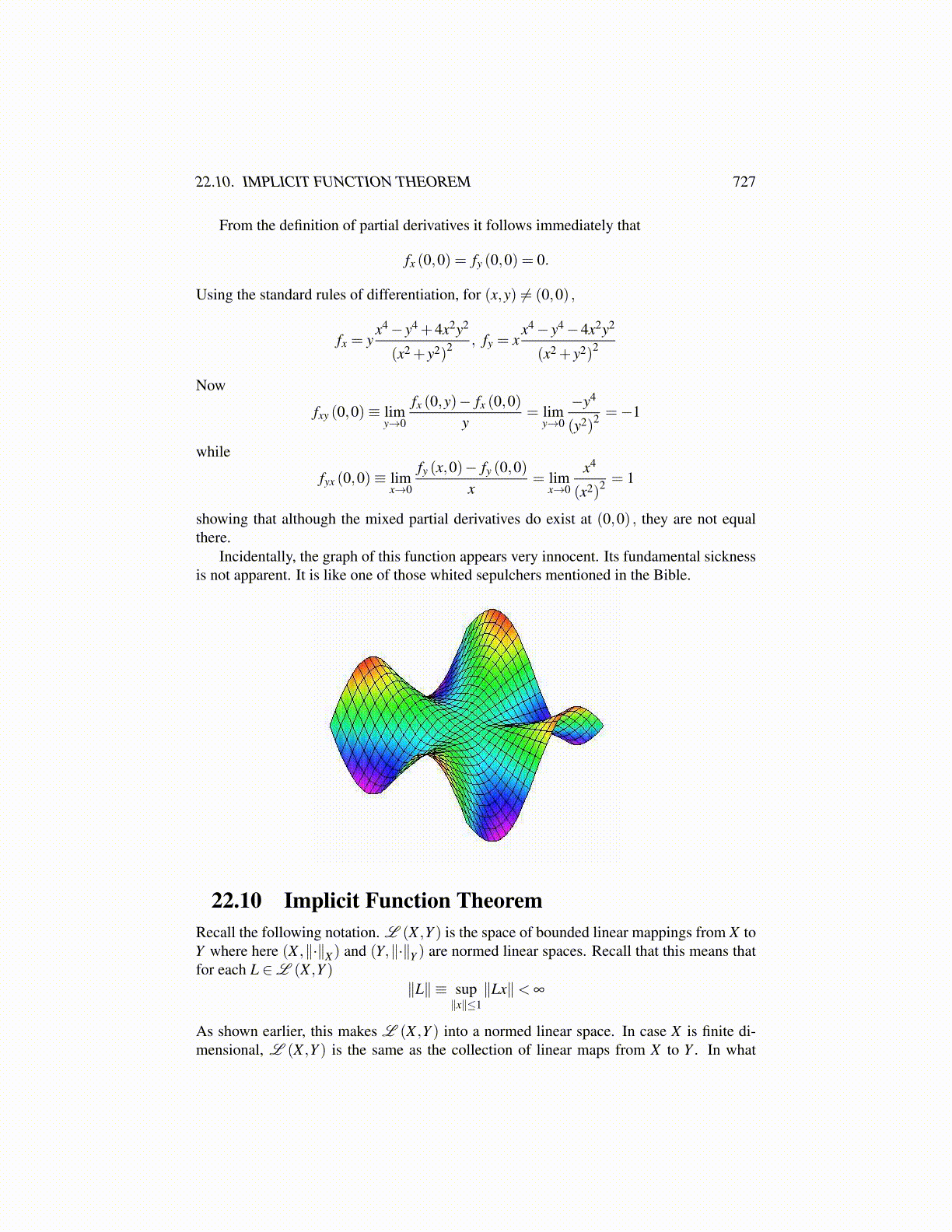
22.10. IMPLICIT FUNCTION THEOREM 727
From the definition of partial derivatives it follows immediately that
fx (0,0) = fy (0,0) = 0.
Using the standard rules of differentiation, for (x,y) ̸= (0,0) ,
fx = yx4− y4 +4x2y2
(x2 + y2)2 , fy = xx4− y4−4x2y2
(x2 + y2)2
Now
fxy (0,0)≡ limy→0
fx (0,y)− fx (0,0)y
= limy→0
−y4
(y2)2 =−1
while
fyx (0,0)≡ limx→0
fy (x,0)− fy (0,0)x
= limx→0
x4
(x2)2 = 1
showing that although the mixed partial derivatives do exist at (0,0) , they are not equalthere.
Incidentally, the graph of this function appears very innocent. Its fundamental sicknessis not apparent. It is like one of those whited sepulchers mentioned in the Bible.
22.10 Implicit Function TheoremRecall the following notation. L (X ,Y ) is the space of bounded linear mappings from X toY where here (X ,∥·∥X ) and (Y,∥·∥Y ) are normed linear spaces. Recall that this means thatfor each L ∈L (X ,Y )
∥L∥ ≡ sup∥x∥≤1
∥Lx∥< ∞
As shown earlier, this makes L (X ,Y ) into a normed linear space. In case X is finite di-mensional, L (X ,Y ) is the same as the collection of linear maps from X to Y . In what